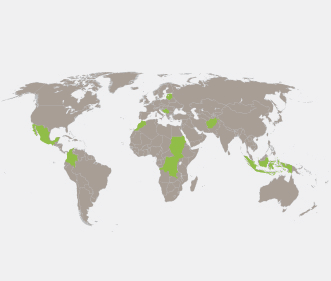Security Governance Group Research and Communications Intern Anni Buelles highlights a panel presented by Sarah Cramer from Samuel Hall which looked at human trafficking in Afghanistan for the recent Counter Child Trafficking Global Online Conference hosted by the SGG.
On October 17, Sarah Cramer from Samuel Hall Consulting joined the Counter Child Trafficking Global Online Conference to share the findings of a study on human trafficking in Afghanistan, which was conducted by Samuel Hall on behalf of the International Organization for Migration in 2013. Within her presentation “Old Practice, New Chains: Modern Slavery in Afghanistan,” Cramer discusses the most common forms of child trafficking in Afghanistan, the causes and determinants of child trafficking, as well as community perceptions on the matter. In the Afghan case, human trafficking takes place internally, within the country’s borders. The study found that more than half of the 95 victims interviewed did not even leave their province.
In Afghanistan the most prevalent forms of child trafficking are labour and sexual exploitation. Within the licit sector labour trafficking involves children being forced to work as brick makers, in mines, or at construction sites. Debt bondage is one example how children become involved in forced labour. Debt bondage includes the provision of a loan by an employer to a worker at high interest rates and fees. The worker and his whole family must then pay back the loan through low wage labour. In this case, the pressure to work does not stem from the employer but the head of the household.
Trafficking in the illicit sector, however, is much more difficult to document. Examples of illicit labour include the cultivating, processing, and smuggling of drugs and the use of children for suicide attacks and theft. Male youth are the primary target. Absent and strained family relationships and physical violence are indicators of a child becoming involved in illicit activities.
Apart from forced labour, sexual exploitation is another prevalent form of child trafficking. Cramer distinguishes between three kinds of sexual exploitation: forced prostitution; bacha baazi (boy play); and other forms of sexual slavery/servitude. Forced prostitution generally affects girls. There seems to be a link between forced marriage and prostitution. According to Samuel Hall’s study 8 out of 13 girls were forced into marriage, only to be forced into prostitution later on.
Bacha baazi is a traditional practice where wealthy, powerful men keep young boys for entertainment and sexual activities. The boys are asked to dress like a woman, entertain guests through dancing, and are often sexually abused by their owner or his guests. Although the practice is illegal in Afghanistan, keeping a “boy to play” is a very open practice as it can enhance a wealthy man’s social standing.
Other forms of sexual slavery involve being held by an individual or group. Whereas incidents of girls being sold and abducted are more private, the use of boys is much more public. Other forms of trafficking include forced marriage, which can be used as a way to resolve conflicts between families, and the exchange of daughters to reduce dowry costs, or household debt repayment.
The economic drivers for child trafficking in Afghanistan are key as chronic poverty is prevalent. The repayment of debt plays a direct role in trafficking. A cycle of debt and debt dependency is created which is transferred between generations. Migration is another driver of trafficking. Half of the victims interviewed have been either internally or externally displaced. If they leave the country, migrants are no longer legally protected, making them more vulnerable to labour or sexual exploitation.
When it comes to community awareness confusion exists between smuggling and trafficking, resulting in misidentification and a clear distinction between the perpetrator and victim. Although the government should punish traffickers, it is also believed that prostitutes should be punished by the government, resulting in the criminalization of victims. A quarter of the community leaders interviewed by Samuel Hall Consulting viewed trafficking for labour exploitation as an opportunity that could help households. A third of the community leaders interviewed did not object to the idea of forced marriage as a form of conflict resolution as it helps to maintain peace in the community.
Cramer concludes her presentation saying that in order to fight child trafficking the local context must be taken into consideration. She says there needs to be a fundamental change in how society views the victims of trafficking. Awareness of child trafficking must be carefully constructed. While important, greater visibility may also result in decisions such as girls not being sent to school with the fear of trafficking used as an excuse by the family. Afghanistan is marked by instability and uncertainty. With the presidential election in 2014, possible economic recession, and increased migration the Afghan government needs donor and international assistance in the following areas to combat human trafficking: the training of police on how to better identify and assistant victims of trafficking; the provision of protection such as shelters; and the implementation of the 2008 Afghan counter trafficking measures.





 Visit the Centre for
Visit the Centre for